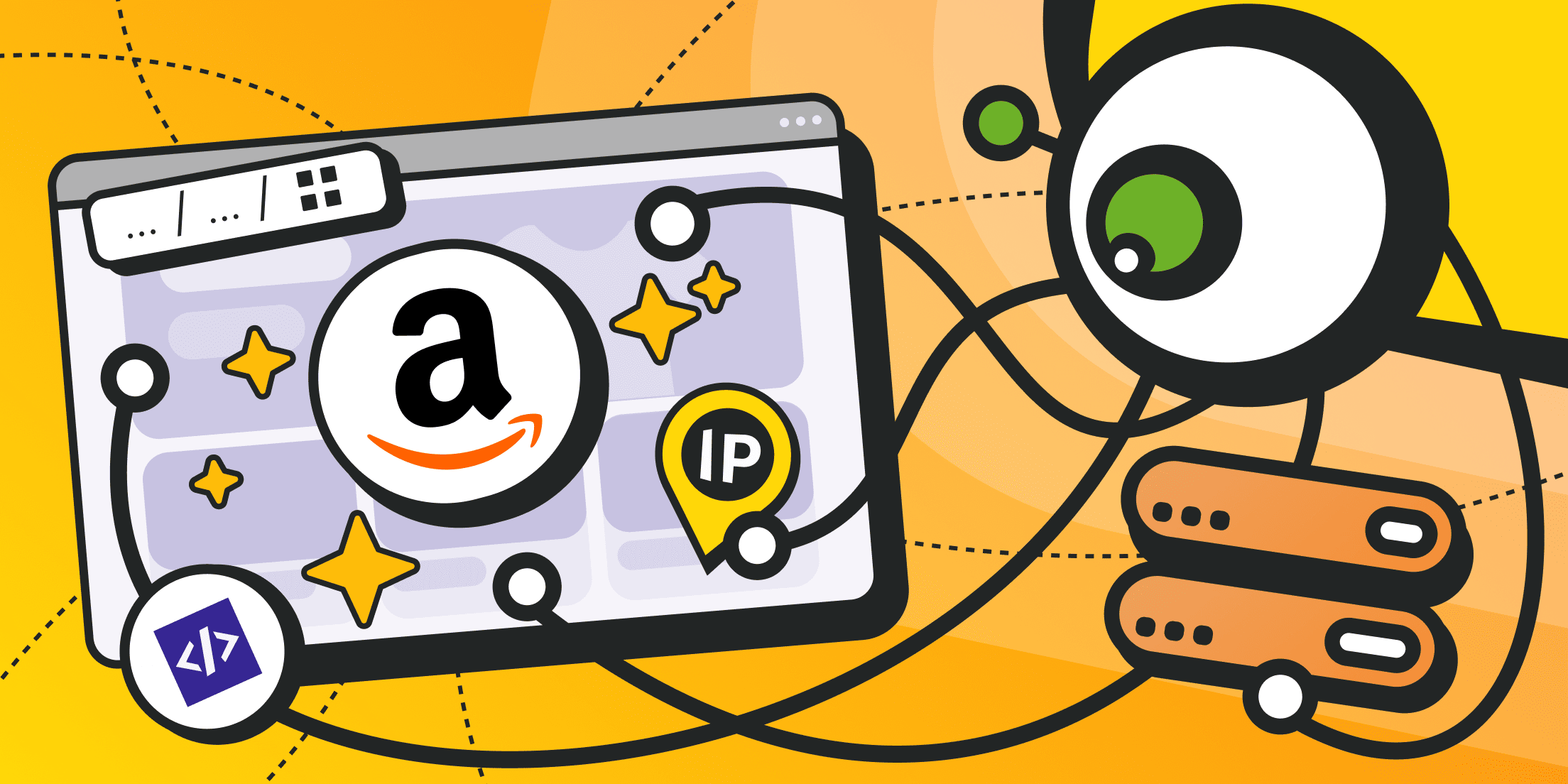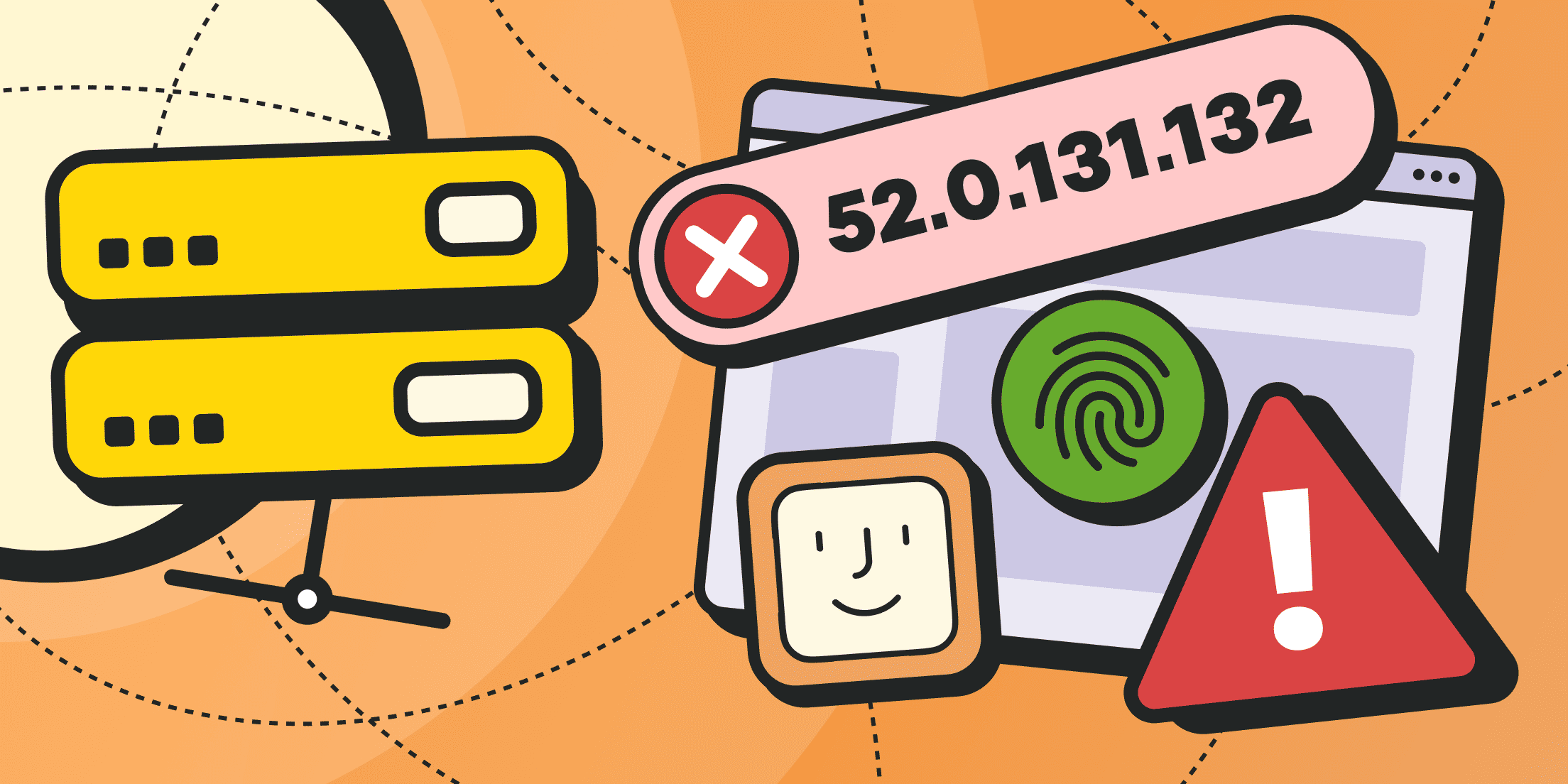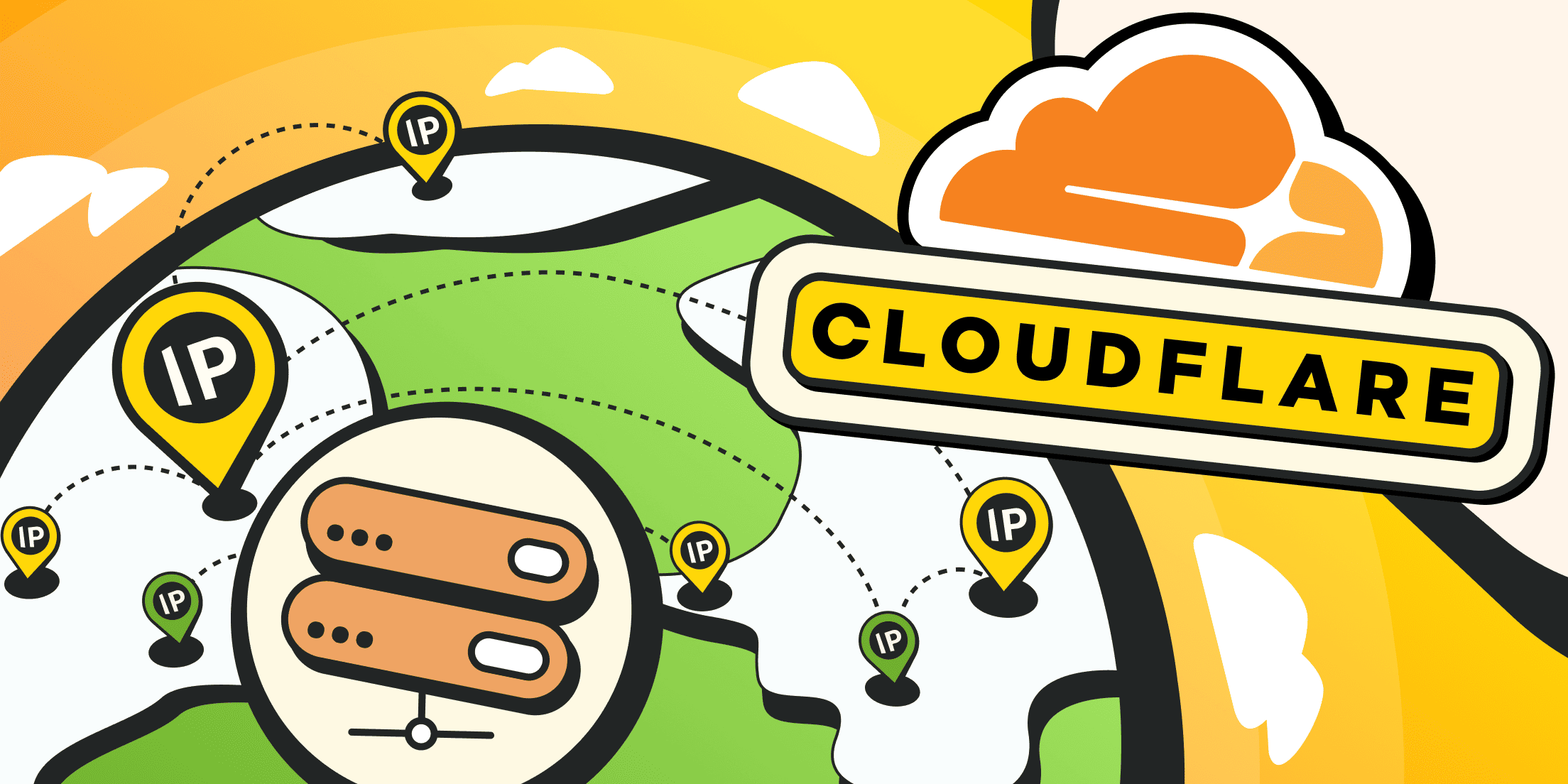Amazon is the world's largest online marketplace, making Amazon scraper a significant tool for businesses that need competitive intelligence. But extracting data from Amazon is not that easy. The platform uses sophisticated anti-scraping measures, complex page structures, and rotating product information that can lead to IP bans and blocked requests quickly.
Successful Amazon web scraper usage needs careful planning and the right tools. Residential proxies and proper scraping techniques create valuable opportunities for market research, price optimization, and analytical decision-making. Web scraping Amazon can help uncover important insights for various business tasks.
Let's take a closer look at how to scrape Amazon data with Froxy. You'll learn to avoid common pitfalls and collect reliable data consistently. We'll explore the steps and best practices you need for successful Amazon data extraction.
What Is Amazon Web Scraping and Why Businesses Use It
Data scraping has changed how businesses collect and analyze online information. Amazon data scraping extracts product information from Amazon's website through automated tools, scripts, or APIs. This process pulls valuable data like product details, prices, descriptions, images, customer ratings, and reviews to help businesses make smarter decisions. The old days of copying and pasting into spreadsheets have given way to advanced automated systems that gather massive amounts of data quickly. Companies now use everything from custom Python scripts to specialized Amazon web scraper APIs to collect information at scale.
Nearly 90% of online shoppers choose Amazon over other platforms. Small and medium-sized U.S. businesses sell more than 40,000 items every minute. These figures show the huge potential that proper data analysis can unlock. Scraping Amazon product data is central to understanding market demands at scale.
This collected data becomes a powerful tool for making strategic decisions. Price plays a vital role, as 82% of Amazon buyers say it's the main factor in their purchase decisions. Transactions happen fast — 28% of customers buy in three minutes or less. This speed makes real-time data crucial.
Businesses use Amazon scraped data in several ways:
- Price monitoring and optimization. Track competitor pricing in real time.
- Supply chain enhancement. Improve forecasting, inventory control, and supplier evaluation to respond faster to market changes.
- Product data enrichment. Better listings through detailed information aligned with customer interests.
- Competitor analysis. Amazon web scraper can show how competitors position products and identify market gaps.
- Market research and trend identification. Discover high-demand product categories and adjust offerings accordingly.
- Review and sentiment analysis. Use customer feedback to guide product updates and marketing.
- Search ranking optimization. Track keyword and ranking shifts to stay visible in Amazon search results.
- Strategic decision-making. Business choices should be based on real data from Amazon web scraper rather than intuition.
If your company lacks the technical expertise in-house, you can turn to third-party Amazon web scraper APIs. These services simplify data collection and deliver structured output for analysis. Demand forecasting is another major benefit. Historical data helps predict trends, optimize inventory, and adapt to customer needs, boosting performance and sales.
Does Amazon Allow Web Scraping?

The rules around Amazon scraping aren't black and white, and you need to think about several factors to determine if data extraction from Amazon follows the law.
Amazon makes its position clear in its terms of use. They don't allow scraping without written permission. That means you can’t just scrape their site whenever you want.
U.S. courts have ruled that scraping public, non-copyrighted data is legal as long as it doesn't violate privacy laws. In 2020, the U.S. 9th Circuit Court of Appeals said scraping public websites doesn’t violate the Computer Fraud and Abuse Act (CFAA). However, Amazon still uses technical tools to prevent scraping.
Breaking those Amazon's rules can lead to problems:
- IP bans and account restrictions — suspicious traffic is blocked.
- Legal action — large-scale scrapers may face lawsuits.
- Termination of services — sellers caught scraping risk losing their accounts.
There are some limited use cases that might be considered fair use (small research projects, personal uses, and educational purposes). Still, Amazon has strong detection systems that identify and block scrapers. Amazon does offer a product API, but it doesn’t always provide the full data businesses want — so many turn to scraping instead.
If you choose to scrape Amazon, you need to be smart about it:
- Mimic human behavior — vary timing and add random delays.
- Manage request volume — avoid sending too many requests per IP.
- Use rotating proxies — spread traffic across multiple IPs.
- Respect Robots.txt — shows good faith, even if not enforced.
- Apply rate limiting — keeps scraping under the radar.
Even if public data scraping is legal in some places, breaking Amazon’s rules can still cause trouble. Always consult a legal expert and weigh the risks before moving forward.
Professional Support
Our dedicated team and 24/7 expert support are here to keep you online and unstoppable.
Why Scrape Amazon Data
Getting useful insights from the world's biggest online marketplace is a great competitive advantage for businesses. Amazon data scraping services offer many strategic benefits that directly affect business performance and decision-making.
Price Monitoring and Optimization
Price comparison is one of the best reasons to scrape Amazon data. Tracking competitor pricing strategies helps businesses set their own pricing models to stay competitive without losing profit margins. This analysis is crucial during peak shopping seasons.
Market Research and Product Trend Identification
Smart businesses use scraping Amazon to find emerging product trends and what customers want. This knowledge helps companies stock products that line up with what the market wants and avoid buying inventory nobody needs. A good example is when scraped data shows growing interest in eco-friendly products, leading a company to create new environmentally-conscious product lines.
Enhanced Customer Understanding
Amazon scraping clarifies customer groups by showing their buying habits and product preferences. Companies can then customize their product offerings to boost sales. Customer reviews offer valuable insights into what consumers think, guiding product improvements and protecting brand reputation.
Strategic Product Profile Optimization
Scraping product details — including titles, descriptions, keywords, ratings, and rankings — enables a complete competitive analysis. Sellers can fine-tune their product profiles to match successful ranking patterns and attract more customers. Tracking product rankings over time is essential to stay visible as Amazon updates its search algorithms.
Forecasting and Inventory Management
Collecting regular data means companies can analyze historical sales data to make better sales forecasts and manage inventory more effectively:
- They can keep the right amount of inventory.
- They can avoid costs from having too much or too little stock.
- It also improves the efficiency of the supply chain.
Competitor Analysis
Scraping competitor listings shows valuable details about their products, pricing, and customer reviews. It helps brands identify market gaps, understand positioning, and spot unauthorized sellers.
Efficiency and Cost-Effectiveness
Amazon web scraping saves time and money compared to collecting data manually. Automated tools quickly gather relevant data from thousands of products, allowing teams to focus on higher-value tasks.
How to Scrape Amazon Products with Froxy

Froxy has a built-in proxy network that automatically rotates addresses to avoid being blocked by IP blacklists. This Amazon scraper randomizes request intervals, headers, and user-agent strings to imitate human activity — steering clear of the detection pitfalls that often block DIY scrapers. Add in a no-code interface, and you can handle everything from small-scale tests to large data extractions with minimal fuss. Forget tedious proxy lists, CAPTCHAs, or stealth coding; Froxy keeps your Amazon scraping tool usage smooth and scalable.
Need an all-in-one Amazon web scraping workflow, from product links to final data output? Follow this guide and harvest valuable product data without the usual headaches.
Setting Up Froxy for Amazon Web Scraping
Below is a straightforward checklist to get started with our scraper Froxy:
- Create a new task. Click Create New Task inside the Froxy dashboard.
- Select the provider. Choose Amazon from the list of preset options.
- Enter your search query. Type in your target keywords (up to 200 characters). Froxy will know which products to collect.
- Configure scraper country. From the dropdown, pick the location that suits your data needs — different regions sometimes show different listings.
- Optional domain & pages. Fine-tune domain settings and the number of pages you want to scrape (max 10). Adjust these if you need a broader sweep or just a tighter focus on page one.
- Run the task. Hit Create Task and let Froxy handle everything in the background — no complex coding or custom scripts required.
- Monitor and download. Watch your task’s progress in the dashboard. Once it’s finished, grab your results as JSON or CSV — or pipe it automatically into your apps via webhook.
What You Can Extract With Froxy Amazon Scraper
Froxy doesn’t stop at the product link. You get a detailed view of each listing:
- Product name.
- Product link.
- Product picture.
- Real-time pricing (and historical, with periodic scrapes).
- Rating & number of reviews.
- Number of sellers.
- Additional labels (“Bestseller” or “Sponsored”).
Pay with Crypto
Fast, secure, and anonymous payments with your favorite cryptocurrencies.
Challenges of Scraping Amazon
Getting data from Amazon requires you to overcome many technical hurdles that protect their platform. Amazon web scraping is nowhere near as simple as scraping other websites.
IP Bans, CAPTCHA, Bot Detection
Amazon uses strong bot detection systems that quickly spot and block automated scraping attempts. Without a doubt, scrapers run into IP blocking more than anything else. Amazon spots too many requests from one IP address — usually after about 400 similar page requests in one session. Then it checks if a human or machine is behind the traffic.
You'll first see a CAPTCHA challenge. It asks users to type unique codes before showing more products or search results. If you can't solve these CAPTCHAs, you'll face complete IP bans. A blacklisted IP address can never access Amazon again, which creates a huge problem for scraping operations.
Amazon's bot detection systems are incredibly smart:
- They look at how often and how much people and computers ask for things.
- They can predict how often someone will navigate through a website.
- They also look for things that a person would not do, like moving the mouse or typing on a keyboard.
- They see suspicious User-Agent strings.
- They also look for missing or unusual request headers.
Standard scraping methods that ignore these detection measures fail quickly. You end up with incomplete data and blocked access.
Amazon's Anti-Scraping Measures and How They Work
Amazon does more than simple IP blocking. They use rate limiting to control how many requests one source can make in a specific time. Unlike sites with static content, Amazon heavily relies on JavaScript for dynamic content loading. Simple HTML parsers just don't cut it for complete data extraction.
Amazon keeps updating its site layout and structure. An Amazon scraper that depends on specific HTML or CSS selectors often breaks without warning. This creates problems because Amazon's product pages look different based on product category, seller, and even specific items.
AWS offers advanced tools like Bot Control for Targeted Bots. These tools use browser fingerprinting and client-side JavaScript checks to stop smart bots that copy human behavior. They create smart baselines of traffic patterns and use dynamic rate-limiting, challenges, and blocks based on confidence scores.
Amazon's anti-scraping systems watch how each visitor behaves and look for signs of automation. A poorly designed scraper triggers these defenses through slow data retrieval, bad error handling, or lack of concurrency.
Professional Amazon web scraping operations use several strategies to beat these challenges:
- Rotating proxies to spread requests across multiple IP addresses.
- Adding random delays between requests sent by an Amazon scraper.
- Copying human-like browsing behavior.
- Setting up request headers and User-Agent strings correctly.
- Using headless browsers to handle JavaScript-rendered content.
Conclusion

Businesses need Amazon web scraping to stay ahead in the digital world. Amazon tries to stop unauthorized data collection, but the right tools and methods make successful scraping achievable. Proper solutions go a long way toward Amazon price scraping to Excel and other vital data-handling tasks.
Companies must understand the technical needs and legal rules before they start scraping. Simple scraping attempts could lead to banned accounts or legal problems. Smart businesses use sophisticated solutions like Froxy that handle Amazon's anti-bot systems well. An AMZ scraper combined with robust proxies can boost data collection drastically.
Careful Amazon scraping provides practical data for pricing, market research, and inventory control. This information helps companies make smart choices and compete better in the ever-changing e-commerce market. When you scrape a seller's products on Amazon, you gain insights that can transform your operations.
The right tools and respect for platform rules determine scraping success. Companies can safely collect valuable Amazon data when they use proper scraping solutions and follow best practices.




